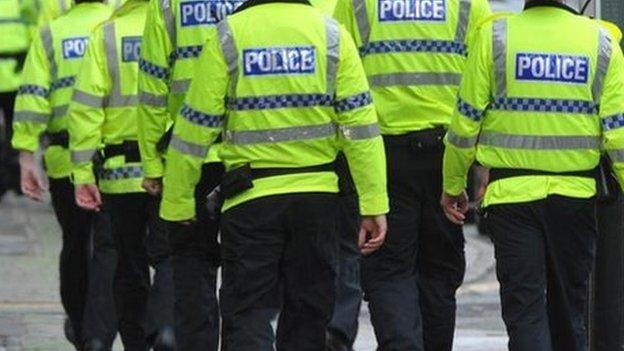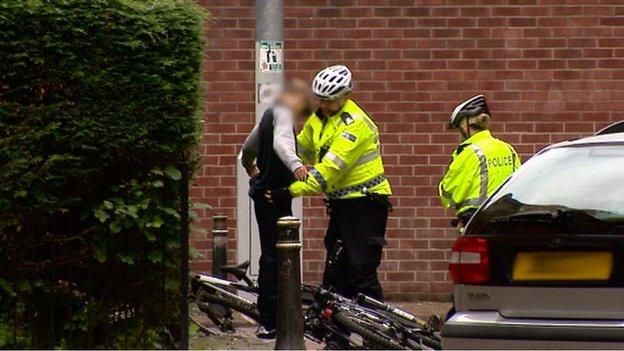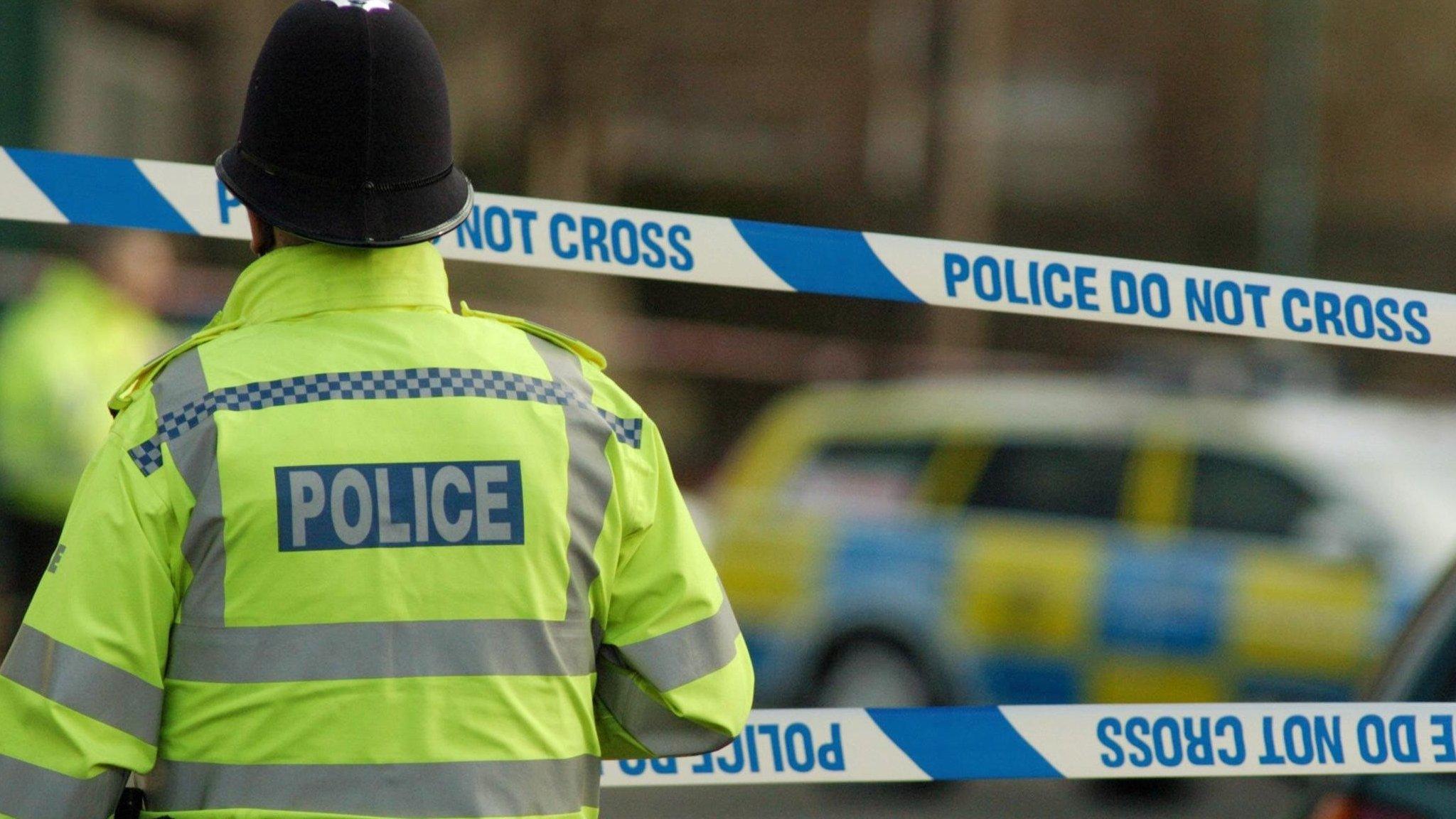How Scotland merged its police forces
- Published

Britain's most senior policeman has called for forces in England and Wales to merge and share resources with other emergency services.
Met Police commissioner Sir Bernard Hogan-Howe said forces were facing "years of more austerity and shrinking budgets".
BBC Scotland's home affairs correspondent Reevel Alderson looks at the experience of creating a single police force north of the border.
Scotland's eight police forces merged into one service in April 2013.
Police Scotland also absorbed the specialist officers in the Scottish Crime and Drugs Enforcement Agency in a move designed both to save money and improve the service offered around the country.
Saving money is not easy - although the Scottish government said the merger would lead to savings of £1.7bn over 15 years.
Approximately 85% of spending on the police service is accounted for by salaries, but the government pledged, when it took office in 2007, to add 1,000 officers to the overall strength.

The number of police officers has been maintained
Numbers remain at that new higher level, meaning civilian staff have had to take the hit.
These include scenes of crime and forensic officers, who are vital for gathering evidence, as well as control room operators and admin staff.
About 1,000 left before the merger took effect, a similar number have applied for redundancy or early retirement, and further cost savings are being sought.
Opponents of the moves, including unions, said this would inevitably mean uniformed officers would have to do the jobs formerly undertaken by civilians.
Senior officers
But the Scottish Police Authority, which is in overall control of the police budget, said the number of HR staff and accountants, for example, could be reduced without affecting the efficiency of the force.
It would have the added benefit of bringing common working practices throughout the nationwide force.
It also pointed out the reorganisation meant a reduction in the number of senior, highly-paid officers.

The use of stop-and-search has proven controversial
There is one chief constable, Sir Stephen House, compared to eight before the mergers, fewer deputies and assistant chief constables.
And, with a reduction in the number of operational divisions - Glasgow went from three to one - fewer chief superintendents.
Cost savings have also been achieved by rationalising the number of control rooms and closing little-used police office public counters.
There have been serious concerns, however, about one consequence of the reorganisation.
Violent crime
Sir Stephen was formerly chief constable of the largest Scottish force, Strathclyde, and there have been complaints that its practices have been unilaterally imposed upon the entire service.
These include the widespread use of stop-and-search, and deployment of armed officers on routine patrols.
But supporters of the merger point to one fact: crime, which has been reducing since 1992 in Scotland, has continued to do so.
And offences which Police Scotland have made priorities, including tackling domestic abuse and violent crime, are now being given the same level of importance throughout the country.
Specialist resources like homicide and rape investigation, as well as forensic accounting and expertise in drugs and trafficking, which were formerly unavailable routinely to smaller forces such as Dumfries and Galloway, can now be drawn upon by officers all over Scotland.
- Published15 December 2014
